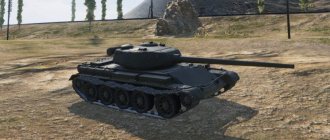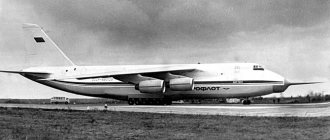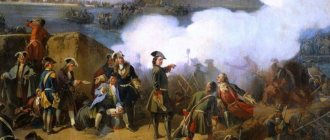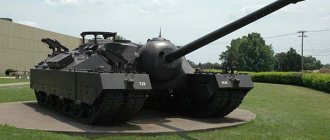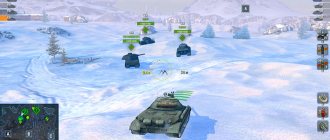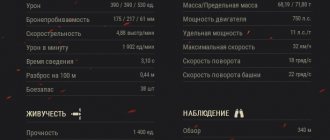At the beginning of glorious deeds
Tsarevich Peter's childhood can hardly be called carefree.
In 1676, when he was only four years old, his father, Tsar Alexei Mikhailovich, died. Power in Russia went to Fedor, his seriously ill eldest son. Everyone understood that the short reign of Fyodor Alekseevich was only the calm before the storm associated with the struggle for power. The court factions were gathering strength before the decisive battle. In the spring of 1682, Tsar Fedor died. A period of unrest and anarchy began in Moscow, known as “Khovanshchina,” when the Streltsy regiments dictated their terms to the government, which did not dare say a word against. As a result, real power went to the decisive princess Sophia, Peter’s elder sister, but formally the brothers Peter and Ivan were proclaimed rulers. Ivan was also in poor health, so the crown would inevitably have gone to Peter.
But between the child king and the Russian throne stood the cunning Sophia.
Peter was only ten years old. State concerns were of little interest to the boy, who was frankly bored during the long palace ceremonies. But for Peter everything related to military affairs turned out to be extremely important. Marching soldiers, the siege of fortresses and the thunder of cannons - that’s what completely occupied the future commander.
The first funny ones
As a four-year-old boy, Peter watched with great pleasure the military exercises of the Russian army. And in 1683, his interest in the army came to fruition - a recruitment of volunteers began, ready to join the amusing troops created specifically for the military training of the tsar.
In the front row was the court groom Sergei Bukhvostov, who forever remained in history as the first Russian soldier.
Evgeny Bashin-Razumovsky Expert on historical issues
Bukhvostov served as a true example of what a military man should be. He was never accused of reprehensible habits, he was distinguished by his persistent character, was strong and resilient. Peter I forever remembered the “recruit”, ordering a bust to be made and his portrait painted with the inscription “I soldier Bukhvostov”. At the end of his life, he rose to the rank of captain of the Life Guards and died in 1728, not long outliving his benefactor.
Peter’s troops received the name “amusing” not only because they were supposed to entertain the Tsar, but, as historian Sergei Platonov wrote, “... because they were stationed in amusing villages.” “Amusing villages” in the language of the 17th century are royal country residences, where the ruler and his retinue went on summer vacation.
At first, those who could not find themselves in the ordinary life of that time, people of low origin, including the future His Serene Highness Prince Alexander Menshikov, joined the amusing army. The nobility of the Russian state despised the newly minted soldiers, considering them something like jesters entertaining the young tsar.
Arrival of Tsars John and Peter Alekseevich to the Semyonovsky amusement court, accompanied by their retinue. Artist I. Repin
But time has shown how wrong they were.
The funny ones become the army
Little by little, the troops created for fun learned and acquired the features of a modern European army. Foreign military specialists invited to train the tsarist soldiers helped with this. Already in 1684, in the village of Preobrazhenskoye near Moscow, where the amusements lived, a real fortress of Presburg was erected. It was built by foreign engineers - in full accordance with the then rules of military science, following the example of the forts of the Marquis de Vauban. In 1686, artillery appeared in the amusing detachment.
Every year in the summer large maneuvers were organized, the main event of which was the siege and assault of Pressburg. Soon, Peter himself began to command one of the sides of the joke battle, not without success.
In 1688, the amusements were replenished with former royal hunters. Peter had no interest in hunting, so the falconers and huntsmen went to the village of Semyonovskoye to study military science.
In 1691, the amusements received a new regimental organization. In two villages near Moscow, where soldiers were quartered, by order of Peter, the Preobrazhensky and Semenovsky regiments were formed, which became the first units of the Russian Life Guards. Already at this time, the number of amusing people was quite large - the Preobrazhents alone numbered up to two thousand people. A year later, both regiments became known as the 3rd Moscow Elective Regiment. The model was the Polish army, where the royal guard was called “elected”.
A large detachment of soldiers trained in European science turned out to be the main argument in the struggle for power.
History of the amusing regiments of Peter I
Time limit: 0
Navigation (job numbers only)
0 of 4 tasks completed
Questions:
- 1
- 2
- 3
- 4
Information
Check yourself! Historical test on the topic: history of the amusing regiments of Peter I
You have already taken the test before. You can't start it again.
The test is loading...
You must log in or register in order to begin the test.
You must complete the following tests to start this one:
results
Correct answers: 0 out of 4
Your time:
Time is over
You scored 0 out of 0 points (0)
Categories
- No category 0%
- 1
- 2
- 3
- 4
- With answer
- With a viewing mark
- Task 1 of 4
1.
In what years were the amusing regiments founded by Peter the Great?
Right
Wrong
- Task 2 of 4
2.
What was the significance of the creation of the Amusing Regiments for the Russian state?
Right
Wrong
- Task 3 of 4
3.
On which river was the amusing fortress of Presburg built?
Right
Wrong
- Task 4 of 4
During the days of the Streltsy rebellion
Time passed, Peter grew up, and people increasingly asked the question - why does power belong to Princess Sophia? At the beginning of 1689, Peter got married. According to the customs of the Russian state, this meant reaching adulthood. But the reins of power were still in the hands of the princess. Two royal courts - the Kremlin, which had power and military strength, and Preobrazhensky, where there were supporters of the legitimate ruler Peter - moved to almost open confrontation. A plan arose among the princess’s circle: to repeat the Streltsy rebellion of 1682, which so successfully gave power to Sophia, and, taking advantage of the unrest, to get rid of her opponents.
For these purposes, they compiled lists of the princess’s enemies, who should have been exterminated, blaming all the blame on the rebel archers.
Sophia personally complained to the ordinary soldiers about how her enemies were offending her, and the princess’s agents distributed money to the archers, inciting them to start a rebellion.
Ordinary participants in the rebellion received two silver rubles - in those days, this money could buy two cows. Clerk Matvey Shoshin, one of the conspirators, dressed in the costume of Peter’s closest relative, boyar Lev Naryshkin, rode through the streets of Moscow at night and beat the archers in order to anger them and force them to take up arms.
Lev Kirillovich Naryshkin
The conflict was resolved due to an accidental mistake.
On the night from the seventh to the eighth of August, a rumor spread in the Kremlin that the amusing ones had left Preobrazhensky and were moving to Moscow to force Peter to power. The archers were alarmed and began to prepare for battle. Peter's supporters, not understanding what was going on, galloped to Preobrazhenskoye, where they said that a Streltsy riot had begun in Moscow. Peter got out of bed at night and galloped to the Trinity-Sergius Monastery, where he asked for asylum.
In the morning, the amusements lined up on the Preobrazhensky parade ground and marched to Trinity with unfurled banners. It turned out that Peter had a real military force behind him, while the Streltsy regiments, although they were more numerous, acted for themselves and did not want to shed blood for the princess. Sophia's power has fallen.
Arrest of Sofia Alekseevna. Artist K. Vershilov
This is how the amusing troops for the first time decided the fate of Russia.
Regimental name designation
The name of both first Life Guards regiments, later called the “old guard,” comes from the names of the villages in which they were formed: Preobrazhenskoye and Semenovskoye.
The current regiment received the honorary name “Preobrazhensky” after the issuance of the corresponding Decree by the President and Supreme Commander-in-Chief of the RF Armed Forces Vladimir Putin on April 5, 2013. The name in honor of the legendary regiment was given for the significant services of its military personnel and, first of all, for the revival of glorious military traditions.
Funny differences
At first, Peter’s soldiers were dressed in whatever they needed. Often they wore out the uniform assigned to them in their previous service, and when new clothes were needed, the treasury issued the first dress that came across, for which there was enough money. Since 1691, a uniform military uniform of dark green color appears. It is interesting that Peter, introducing this form, decisively broke with the old Moscow traditions. Previously, it was believed that the ceremonial color of regiments close to the Tsar should be red.
At the Epiphany Parade of 1699, the Preobrazhensky and Semyonovites for the first time wore a new uniform of dark green and blue colors. From then on, right up to the very end of the old Russian army, it was believed that green was the color of the Preobrazhentsy (it also became the main color of the uniform of the entire Russian army), and blue was the color of the Semyonovtsy.
The first uniform of Peter's guard is completely different from the possible associations with the words "Peter's soldier." Until 1699, the amusing ones wore the same clothes as the rest of the Russian soldiers - ordinary streltsy caftans.
Fusilier of the Preobrazhensky Regiment and grenadier of the Semenovsky Regiment until 1702
But after looking at the European order and returning from the Great Embassy, in 1699 Peter began a major reform: he ordered the army to be dressed in Hungarian-style caftans - shorter and decorated with a twisted cord on the chest. At the same time, a royal decree was issued ordering all townspeople to wear “French and Hungarian dress.” However, the Hungarian style did not last long. Already in 1702, the army began dressing in “German dress”, fully consistent with the general European fashion.
Initially, the Grenadier Guards were distinguished by rich hats made of bear fur, but after 1707 these were replaced by leather helmets with a copper forehead and ostrich feather. These hats turned into a real symbol of Peter's guard and lasted until 1796.
Musketeer of the Preobrazhensky Regiment, 1703-1708; Fusilier of the Preobrazhensky Regiment, 1702-1720; grenadier staff officer of the Semenovsky regiment, 1712-1720
The officers' uniform featured gold braid, a silver officer's badge, and a tricolor scarf of white, blue, and red. By the way, the date of the battle with the Swedes near Narva was stamped on the officer’s badges of the guard - November 19, 1700.
Achievements of the regiment before disbandment
After the death of Peter the Great, the guards regiments participated in the installation of Catherine I on the imperial throne (1725) and in all the palace coups for which the 18th century in Russia was rich. There were also wars in it - with Turkey in 1735-1739, with Sweden in 1741-1743 and 1788-90. Sweden tried in every possible way to take revenge for the defeat in the Northern War, but the valor of the Russian troops, especially the soldiers and officers of the Life Guards, did not allow the enemy to return the lost lands and the status of the military-political hegemon of the Baltics.
In the 19th century, the regiment had the opportunity to fight in the following wars:
- with Napoleonic France in 1805-1807;
- with Sweden in 1808-1809;
- Patriotic 1812 and in the subsequent foreign campaign of the Russian Army;
- with Turkey in 1828-1829 and 1877-1878.
Also, the Preobrazhenites were involved in the suppression of two Polish uprisings - in 1830 and 1863 (remember, under Catherine II, part of the territory of Poland became part of the Russian Empire).
The Guards Regiment also fought in the First World War, taking part in all the most important battles, including the famous Brusilovsky breakthrough.
First battles
The first review of the new troops, trained according to the European model, was the Kozhukhov maneuvers of 1694. They lasted 20 days in October, when the regiments marched through cold and impassable conditions from their apartments to the village of Kozhukhovo, where the archers were waiting for them, ready to defend the newly built fortress. According to various sources, from fourteen to forty thousand people took part in the maneuvers.
Peter the Great with amusing troops
In the finale, the new army under the command of Peter’s closest associate, Prince Caesar Fyodor Romodanovsky, completely defeated the Streltsy and, after several fierce assaults, captured the fortification. Peter himself walked in the ranks of the attackers, commanding the amusing artillery. The following year, the funny ones took part in the first truly dangerous business - they went on the Azov campaign against Turkey.
The first campaign was unsuccessful, but the second (1696) was crowned with success. The troops captured a strong fortress in the Don Delta, which opened the way to the Azov and Black Seas, and the young Russian fleet received its first naval base.


